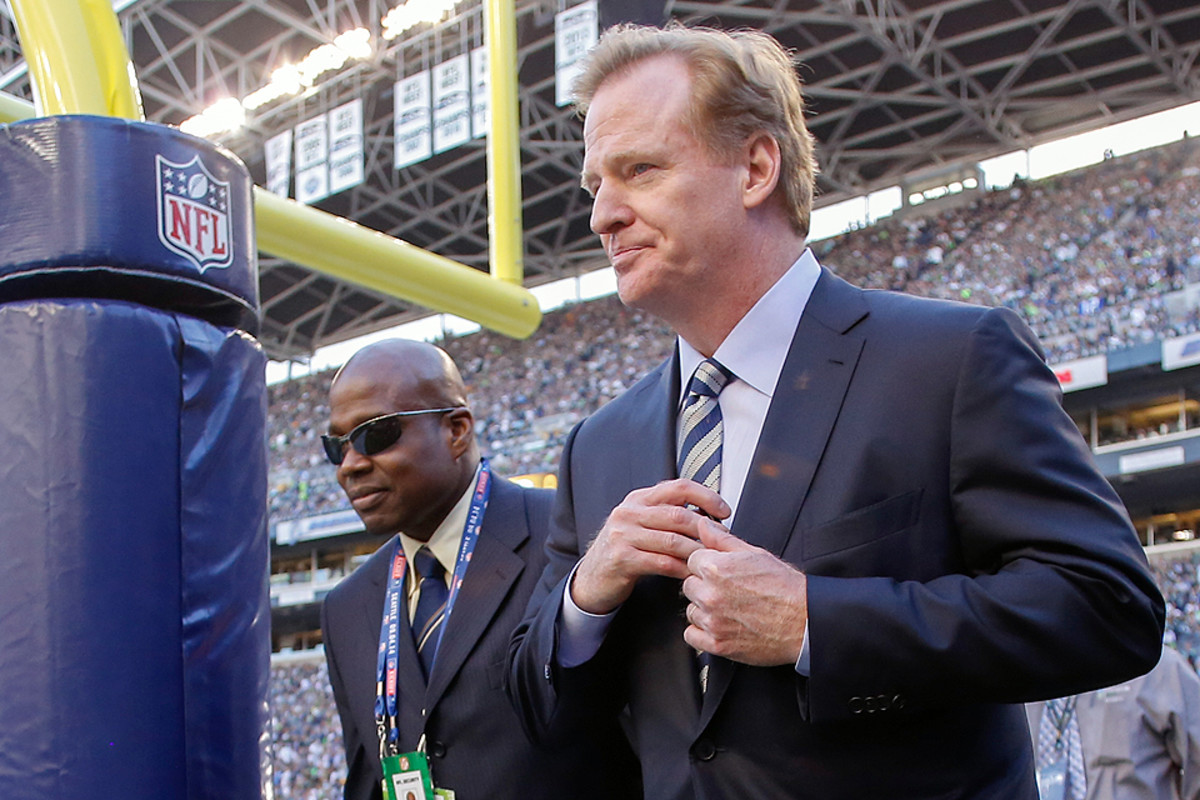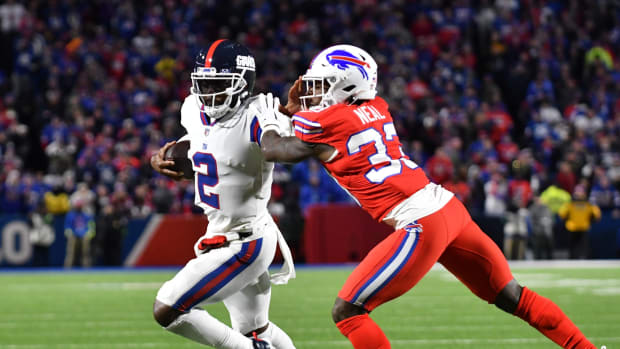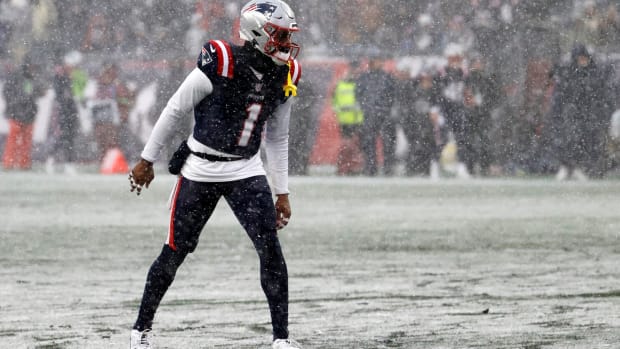
The Train Never Slows Down
The NFL is very thankful for the adage “This too shall pass.” While fans and media rail against the league during various crises that seem so damaging at the time, the NFL is secure in knowing that the appeal of the game has been, is and likely will continue to be strong enough to overcome. It is part of us as a culture, for better or worse, much in the way soccer is in other countries. The game always brings us back.
From an image and credibility perspective, the domestic violence visuals of Ray Rice punching his wife and Adrian Peterson whipping his son have cast a shadow over the NFL this season, showing a darker side of high profile players that carries over to perception of the entire league and its players. However, even despite missteps by the league in the Rice matter and last week’s chastisement by independent arbitrator Judge Jones, the popularity of the game has not suffered.
This week brings further questions of credibility, with testimony in the Adrian Peterson appeal that the NFL executive VP of football operations Troy Vincent told Peterson his time on the Commissioner Exempt list would be “time served” if he attended a meeting with psychologists, a new part to a disciplinary process still being formulated. Further, fruitless meetings continue with the NFLPA about the disciplinary process while Congressional hearings take an accusatory tone about the league’s handling of domestic violence. It is an understatement to say it has not been a good week for the NFL.
Still Judge, Jury, Executioner
Despite losing in the Ray Rice appeal, Goodell shows no signs of backing off his role as the Conduct Commissioner.
FULL STORY
Yet, even despite multiple attacks on the league office’s credibility, the NFL continues to not just survive, but thrive through virtually any crisis. It is fortunate that in this Twitter era of shorter and shorter news cycles, even the once-raging stories such as Rice and Peterson eventually lose their volume. The NFL knows that while many care about off-field problems—and some like myself analyze them in the broader scheme of Commissioner power and player relations—there are many saying, in essence,
Move on, we’re tired of that.
As damaging as these issues seem in the moment, the NFL knows that there are always other things to talk about, both on the field and off. The train never slows down.
Outrage dissipated
One key tenet of human relations is that emotion and impulse, as strong as they seem at the moment, always fade. Here are a couple prime examples from my experience in recent years.
I was consulting with the Eagles in 2009 when the extremely popular Brian Dawkins was allowed to move to the Broncos in free agency. Fans (and media) lashed out, and the team received calls and emails from people venting their anger and saying they did not want to be season ticketholders anymore. I instructed the Eagles employees to respond to a couple of those notes as follows: “Sorry you to lose you; we’ll be assigning your seats to others. Best wishes from the Eagles.” Within 30 seconds, responses came back pleading: No, wait! I was just blowing off steam; don’t take my tickets, please!!”
Another example of dissipating anger was during the 2011 NFL lockout, which I covered more than any (sane) person should. Frustrated and confused by contentious negotiations and complex litigation, I received thousands of messages, tweets and comments from fans infuriated by the lockout, saying they were not going to follow the NFL even when the lockout was over. I doubt more than a handful of fans stayed away.
Bringing it to the present, we are not far removed from the breathless outrage of fans and media in September. Well-respected media members openly and publicly questioned whether to continue to cover the league. There was national contempt for not only the players who did these horrific acts, but the stain extended to all players and the league itself. The rage meter was at a red level.
Best Buys in Football
At a third of the price of an elite quarterback, a good coach is the wisest expenditure in the salary cap era.
FULL STORY
While these stories are still relevant, the heightened emotions have largely faded. This season—perhaps more than any—illustrates the popularity of the game will defeat short-term crises every time. You know that, I know that and NFL knows that.
Business booming
With the crises of the season, one would think that the NFL would be suffering in one or more of their key metrics. Not that I can tell.
Television ratings are soaring, buoyed by record numbers for Thursday Night Football, strategically on CBS—previously the highest-rated Thursday night entertainment programming—for the first time. The NFL rewarded a longtime partner and removed its biggest ratings threat in one motion. It was a one-season commitment to CBS, so these record ratings will now be used in negotiations for TNF going forward.
Other key metrics that owners care about, player costs and asset values, are strong. A team-friendly CBA through 2020 ensures healthy profit margins. The $1.4 billion price tag for the Bills outpaced valuations from Forbes and other economists. And despite some public relations prodding from Anheuser-Busch in September, sponsors and advertisers continue to pay ever-rising prices to be associated with the NFL. Business is booming.
Threat removed
I thought the one potential threat to the continued prosperity of the league was potential exposure in a class-action lawsuit from the concussion plaintiffs. NFL owners, using the leverage of time and the plaintiffs’ need for compensation, removed this threat at a cost of roughly $1 billion, much of it to be paid by insurance companies. It is unfortunate that NFL owners treated something so sensitive as player head injuries in business terms, but that is what they do.
The MMQB, 24/7
Keep up with the latest from Peter King and The MMQB team.
I attended last week’s hearing on the adequacy of the settlement and heard heartfelt pleas from former players and their spouses. My strong sense, though, is that with only 200 players opting out of the deal, Judge Brody—who oversaw settlement negotiations—will soon grant final approval on a deal that includes
no admission of liability from the NFL.
Tickets vs. TV
Perhaps the only legitimate threat to the NFL’s continued prosperity is the challenge of the stadium experience matching the home-viewing experience. With fans increasingly watching games with multiple screens—television, computer, tablet or mobile—and frustrated with the hassles of traffic, parking, crowds, etc., the challenge is becoming greater. The NFL has been aware of this challenge—it was a top-of-agenda item as far back as 2006—and Levi’s Stadium is being touted as an early adapter serving as a model for other venues.
While the live gate may be a concern, the business reality is that broadcast revenues dwarf ticket sales revenues. Despite the NFL (unsuccessfully) fighting the FCC on the archaic blackout rule, owners privately know that the revenue lost from a few thousand unsold tickets is, at best, marginal. Tickets bring owners tens of millions a year. Television brings owners hundreds of millions a year. Do the math.
Thus, despite the crises of the moment, the NFL’s inexorable march to continued prosperity continues.
Follow The MMQB on Facebook, Twitter and Instagram.
[widget widget_name="SI Newsletter Widget”]









































